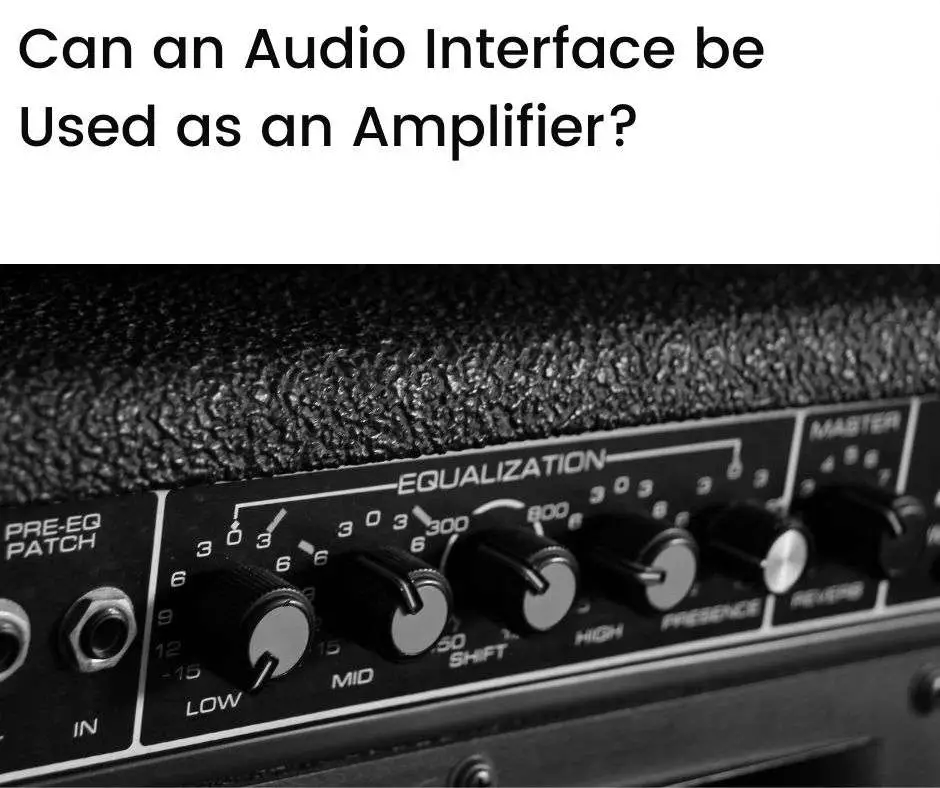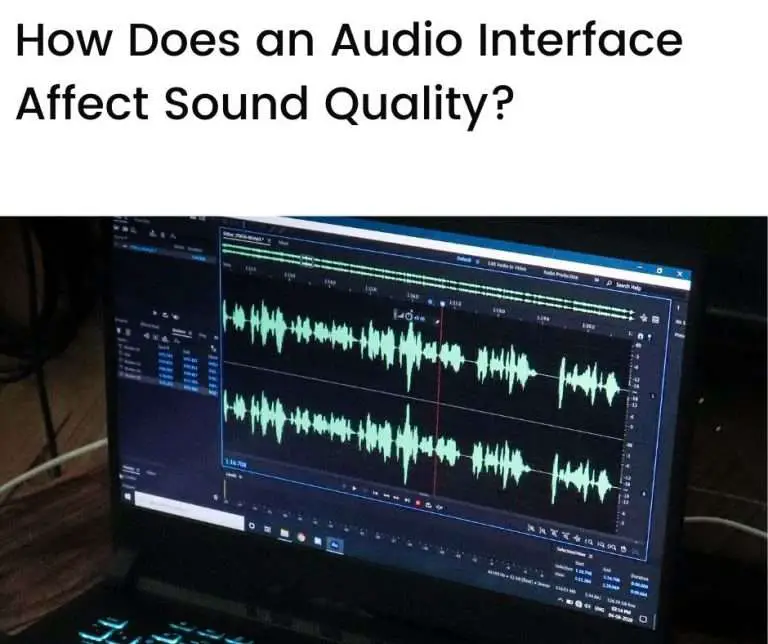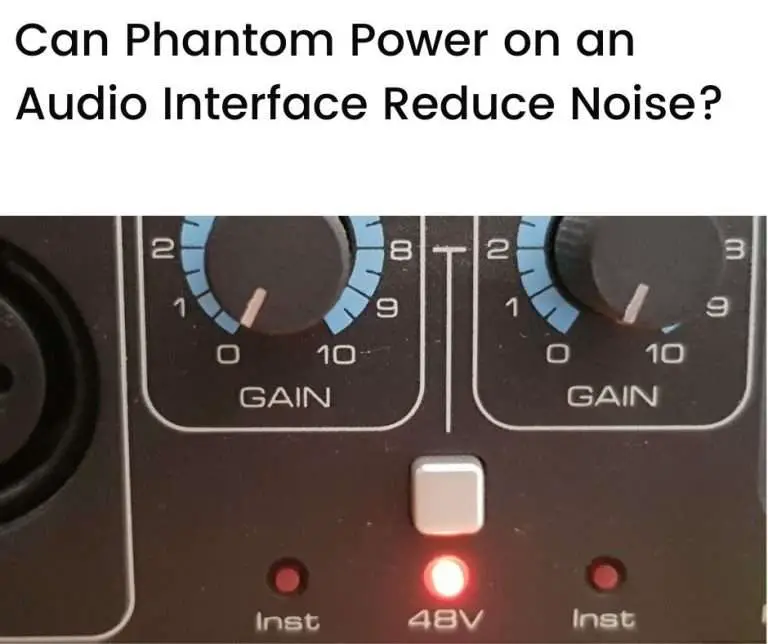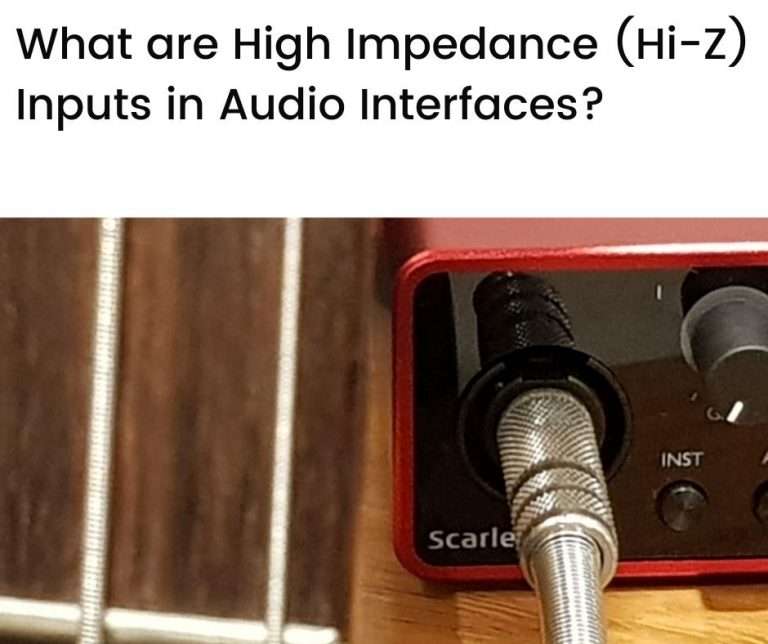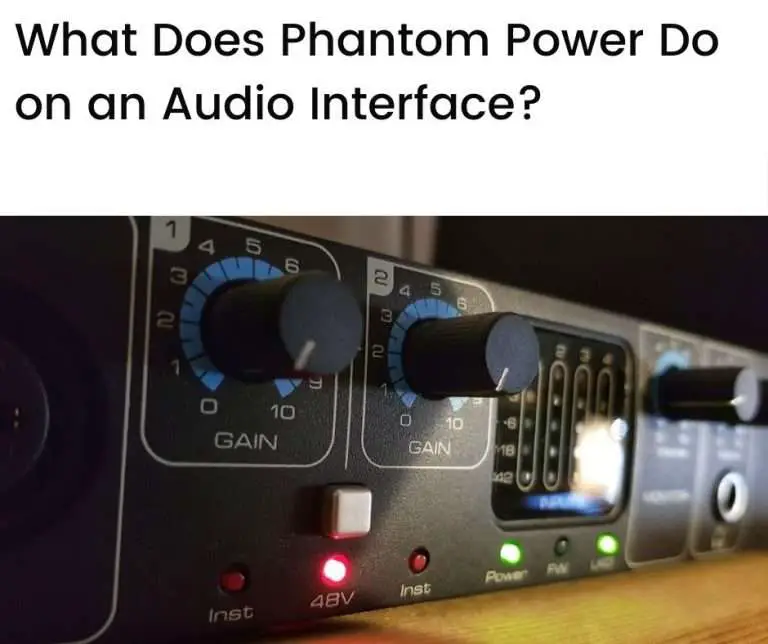Generally speaking, no—an audio interface is not designed to be used as an amplifier (or “amp”). However, it depends on what you need to use an amp for. In some instances, an audio interface may be sufficient for your needs but in other cases, it won’t.
In this article we’ll look at:
- What is an audio interface?
- What components do typical audio interfaces have?
- Why do you need an amp, and would an audio interface work in these situations?
- Conclusion
What is an audio interface?
An audio interface primarily serves to convert sound from an analog signal to a digital signal and transfer it to a computer. It can also do the reverse—convert digital sound back to analog. This process is called analog-to-digital conversion (ADC) or digital-to-analog conversion (DAC) respectively.
This conversion process is necessary for any audio workflow that uses computer technology. This is because computers require digital information to work with—they cannot work with analog information.
And although many computers include an onboard sound card (or “sound chip” built into the computer’s motherboard) that can perform ADC or DAC, the capacity and quality of the sound card’s output is typically quite limited compared to modern audio interfaces.
What components do typical audio interfaces have?
To perform ADC and DAC, audio interfaces need inputs and outputs. The inputs may be few or many but fall into three main categories:
- Line-level inputs for signals from electronic devices such as mixers or synthesizers
- Instrument inputs for signals produced by musical instruments such as guitars
- Microphone inputs for smaller signal levels produced by microphones
Sometimes the microphone and other inputs are combined in a dual-purpose socket called a combo jack.
The outputs may be for headphones or maybe line-outs for speakers (via amplifiers) and monitoring systems.
In addition, audio interfaces need a way to connect and transfer information to and from a computer—most use USB, Thunderbolt, or PCIe connectors to do this.
But what about amplifiers?
While a standard audio interface doesn’t include an amplifier, it does include pre-amplifiers for the microphone inputs, whose signal levels are very small.
Why do you need an amp, and would an audio interface work in these situations?
Whether an audio interface can be used as an amp or not depends on what you want to use the amplifier for.
As mentioned, standard audio interfaces do not include amplifiers—so, how can you use an audio interface as an amplifier if it doesn’t include one?
Depending on your needs, you may not actually need to use an amplifier at all—an audio interface may be sufficient.
Let’s consider three common situations when you may wish to use an amp, but may or may not actually need to.
1. Practicing
If you’re practicing an instrument, say a guitar, you may want to plug it into an amplifier (with speakers) so that you can hear yourself play.
In this situation, there’s really no way of getting around the need for an actual amplifier—if you want to hear your instrument loud and clear, then you’ll need an amplifier and speaker system.
An audio interface cannot replace an amplifier in this case. You can, of course, plug your instrument into an audio interface, rather than an amplifier, but you would then still need to connect an amplifier and speaker system to the audio interface (either directly or via a computer system) in order to hear your sound.
Alternatively, if you’re happy using headphones for practicing your instrument rather than listening through speakers, then you don’t need an amplifier.
Most modern audio interfaces include a headphone outlet, so you can plug your instrument into the interface and hear what you’re playing through headphones connected directly to the headphone outlet.
You would, of course, need to use a pair of headphones that is capable of being driven by the headphone amplifier in your audio interface. If the headphone’s impedance is too high relative to the power of the headphone amplifier, then it may not work directly with the audio interface, and you’ll need an additional amplifier.
2. Playing live
If you’re playing live, there’s probably no way of getting around the need for an amplifier (and speaker system).
Again, you can plug your instruments and microphones into an audio interface, but this would, in turn, need to be connected to an amplifier and speakers (either directly or through a computer system or other equipment) in order to generate sound that’s loud enough for a live audience.
3. Recording
What about when you’re recording? Do you need an amplifier in this case?
It depends on how you want to monitor your sound during the recording session.
If you’re happy listening to your instruments, vocals, etc. through headphones (whether directly from an audio interface or via a connected computer system), then you won’t need an amplifier or speaker system. You can connect your headphones directly to your audio interface to monitor your sound.
On other hand, if you prefer to hear your sound played back through a speaker system, then you’ll need an amplifier to drive the speakers. The headphone or line-out outputs from an audio interface simply won’t be able to drive the speakers.
Conclusion
Audio interfaces are not amplifiers. Their primary purpose is to convert sound between analog and digital signals so that instruments and voice can be input into a computer system.
Standard audio interfaces do not include amplifiers. They do, however, include pre-amplifiers to boost low-level signals such as microphone inputs. But these are not capable of driving a speaker system as an amplifier would.
So, an audio interface cannot replace an amplifier. But, depending on your needs, you may not need an amplifier at all.
If you’re happy to practice or record using headphones, for instance, then you can do so directly through your audio interface (or connected computer system, if it has a headphone outlet) and you won’t need an amplifier and speaker system.
If, however, you want to playback sound through speakers—in a recording situation or live performance, for instance—then you’ll need an amplifier to drive the speakers.
So, while audio interfaces are a versatile and necessary technology for modern sound recording systems, they serve a specific purpose.
When your main goal is to amplify sound, there’s probably no way of getting around the need for an amplifier—an audio interface simply cannot reproduce what an amplifier does.

